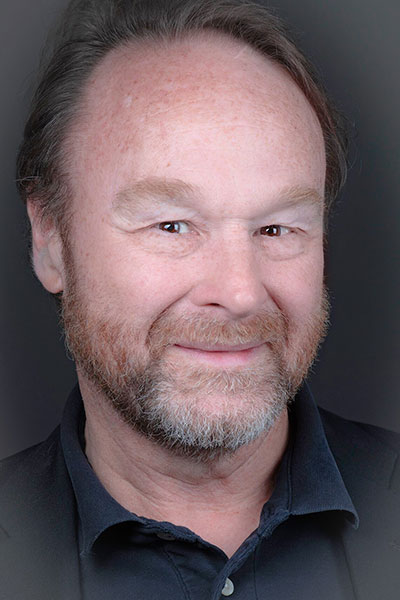
By Duo Dickinson, FAIA
The CAD monkey (and degrees and training based on those skills) will soon become obsolete. This is because we are on the edge of a complete flip in how every service industry functions, including medicine, law, and architecture. It is now a cliché to declare that Artificial Intelligence will change everything, but it will.
Every potential client who architects serve under 40 has created a software derived sketch. Houzz is accessible through everyone’s browser, as is Zillow, Pinterest and Google Earth. Take those tools and multiply their capacities by 1,000 in the coming decades, and architecture changes. No more CAD-execution with humans: Revit and BIM will explode into all the ways architects have functioned since the computer rewrote the office manuals of every architecture office in the world. Anyone will be able to directly create buildings through software, no architect need apply.
How do we educate for this coming transformation?
I believe architectural education needs to train architects to recognize and harness our innate desire to create. Architecture school need to teach architects how to better listen, communicate, as well as design. Education needs to focus on the humanity of seeing, responding, listening, and adapting. Artificial Intelligence is a nearly infinite database, but the database itself is rigid and inhuman. No software can simulate the human reality of design, even with the tools of AI.
I have been part of the four-year-old Building Beauty architecture program in Sorrento Italy, where the writings of Christopher Alexander bypass all the presentation and technological obsessions of traditional architectural education and focus on the way we see the word around us, including buildings. Education still needs to address those technologies, as well as the necessary exposure to the top-down perspectives of history and fine arts sensibilities: But now, preparing for AI, the way we see, understand and value the things we make is not a result of education, but an indirect benefit of it. I think that human insight now needs to be the center of architectural education, so that anyone can relate to any architect on any desire.
This shifts the Architectural Canon from an outcome-based, object-focused, and presentation-obsessed playpen for the elite. AI allows anyone and everyone to explore the reasons, criteria, methods and values of those using the buildings. Those using buildings will soon be given direct input into those buildings via AI, without architects or real estate brokers. Either architects are useful in that new direct exchange, or we will become an even more remote artisanal group of dilettantes.
There are now approximately 6,000 students graduating from US architecture schools each year, and 6,000 professors guiding architectural education. Over the last 40 years the emphasis in architecture has shifted away from building to thinking about architecture as an art. I say this because I have taught at various places over the last 35 year (currently at the University of Hartford). The perspective of school will change because its cost will be unjustifiable for many. The many efforts to diversify the applications of an architectural education beyond traditional practice have deflected the growing irrelevance of a traditional architectural practice model. Statistics from before the pandemic show that more than half of architectural graduates are not hired into traditional practice: and that practice is about to totally change.
Its silly to say “Change.” without offering the ways to respond to a fully morphed world. Here are my thoughts.
- The “Professional Practice” programs in architecture schools comprised of war stories and organizational charts are rapidly becoming a joke in a changing world – a waste of time on the edge of the AI explosion.
- The integration of students to the way buildings are made needs to be a direct, integrated, accredited portion of education: I propose that two or more semesters should include students working 20 hours a week in offices or construction companies, for credit, with faculty advisers, graded journals and reports each semester.
- The integration of “Communication” as a set of courses that offer a program teaching verbal, written, interpersonal ways of listening and offering responses – not unlike the way psychotherapists and clerics are now trained.
- Every studio design project must be required to have a “client” (recruited from the faculty described in Item 5 below) who is brought into the studio at the start of every project, and then offer feedback during the design process and at the project’s end. Further, the design professor needs to incorporate a builder into the review process to offer feedback.
- Architecture schools need to address their faculty’s experience in actually building buildings, with clients and builders. I propose that at least 30% of any design faculty is explicitly hired from architects who have practiced or are part of a practice that builds buildings, with a minimum of 10 years of experience, with a minimum of 20 built projects, reviewed by faculty hiring committees.
School connects those who want to do things with how to do them in any discipline. But in architecture the “how” is not just design theory, or presentation techniques, or even the technological skills to execute the designs that will be fully defined by AI. It is time to make the undeniable human basis of design and building be part of architectural education. The humanity of building is often lost in our perception of architecture and may cease with AI, unless architects change.
The way designers are trained must evolve beyond the studio model, to embrace an understanding of building and the communication skills that are required before designs can be executed. Architecture as a profession has less than a generation to change the way architects are trained: Will we prepare the next generation to succeed in this changing world?

Duo Dickinson, FAIA
Graduating from Cornell in 1977, Duo Dickinson opened his architectural practice in 1987. His work has received more than 30 awards and he is a Fellow in the American Institute of Architects. Much of his work is dedicated to pro bono or at-cost work for not-for-profits, totaling over 75 projects for over 30 organizations over the last 30 years. His design work has been published in more than 70 publications, he is the architecture writer for Connecticut Hearst Media Corp. and a staff feature writer for The Common Edge Collaborative and Mockingbird Ministries. He is a contributor to Arch Daily and has written for Archinect and other publications. His blog, Saved By Design has received over 100,000 hits in the last few years. Dickinson has also written eight books, the latest of which, A Home Called New England was nominated for a 2018 CT Book Award. He hosts the radio series “Home Page” on WPKN Radio. Dickinson has taught at Yale College and Roger Williams University. He is now on the faculty of the Building Beauty program at the Sant’Anna Institute, Sorrento, Italy as well as co-chair of their American Advisor Board and is teaching at the University of Hartford.

Great article Duo. There needs to be more thinking like this in our schools – starting much earlier – 5th grade or so.
We compiled 7 ways to embrace artificial intelligence in architecture industry, so you can start using AI to revolutionize your work as an architect.